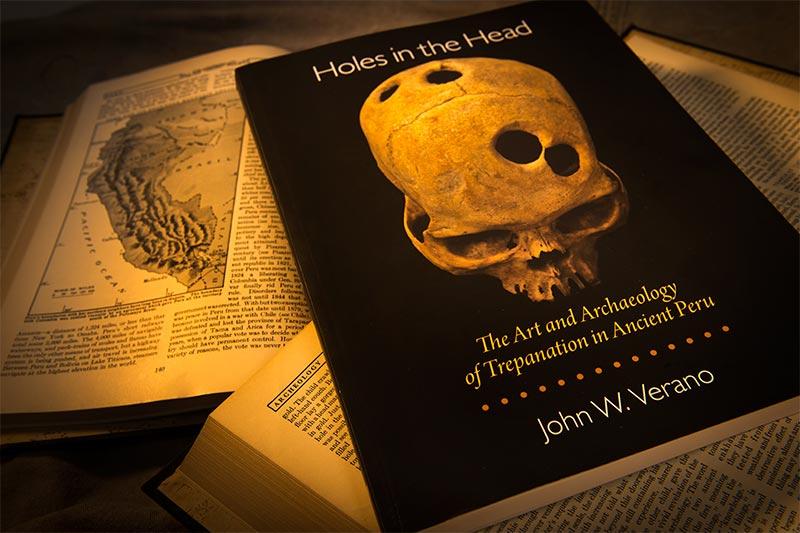New textbook explores ancient cranial procedure
For a textbook, Tulane University anthropology professor John Verano’s Holes in the Head is anything but bland. The book is filled with images of pre-Columbian skulls, all with holes drilled into them as part of the ancient cranial procedure known as trepanation.
Subtitled The Art and Archaeology of Trepanation in Ancient Peru, Verano’s work is the culmination of nearly three decades of research in collaboration with neuropsychologist J. Michael Williams. Their study took them to museums around the world, where they photographed and recorded information on more than 800 Peruvian trepanned skulls.
Among them are an adult female cranium with an oval-shaped healed lesion on the frontal bone, a young adult female with a healed depressed fracture of the right parietal bone and an adult male with five healed trepanations.
“We can put aside any idea that trepanation was a primitive, backward practice. It’s important to understand how things were done back then and some of the amazing feats in terms of high survival rates.”
John Verano, professor of anthropology
Trepanation is the oldest of surgical procedures, dating back more than 5,000 years in Europe and to at least the fifth century BC in the New World, especially Peru. In Holes in the Head, Verano explores the origins and spread of the practice throughout the Central Andes, focusing on techniques, motivations and success rates.
“I’m interested in the health of ancient people, and part of that is medical practices,” said Verano, who teaches a course called Bones, Bodies, and Disease. “This particular medical practice on skulls is known to medical historians and anthropologists, but no one has put together a detailed history of trepanation in ancient Peru.”
The book features contributions from several scholars, including Dr. David Kushner, a Tulane Medical School graduate who co-wrote a chapter on ancient trepanation from the perspective of modern neurosurgery.
Earlier this month, National Geographic published an article about the book titled “Amazing Things We’ve Learned From 800 Ancient Skull Surgeries.” One of those things, Verano said in the article, is the surprisingly high success rate.
“We can put aside any idea that trepanation was a primitive, backward practice. It’s important to understand how things were done back then and some of the amazing feats in terms of high survival rates.”

